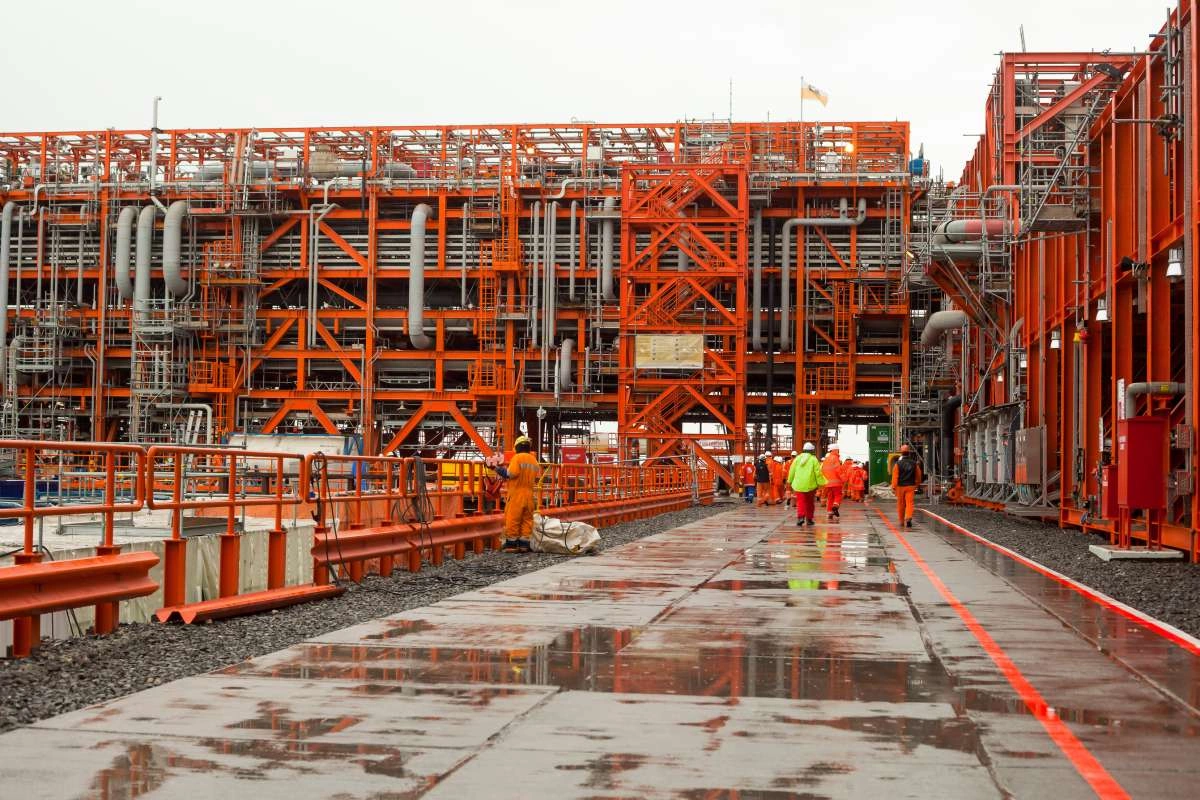
While researchers at the Transparent World of the Caspian Sea project claim to have detected an oil spill in Kazakhstan’s Kashagan oil field, the rig's operator, NCOC, continues to deny these allegations.
Image: The Kashagan oil field
(Eurasianet) Russian researchers say they have detected a large spill in Kazakhstan’s Kashagan oil field covering at least seven square kilometers. But the entity that operates rigs in the area denies a spill has occurred.
The researchers, working on a project called Transparent World of the Caspian Sea, published a satellite image of the area on their Telegram channel, describing a black spot shown as an oil “slick of anthropogenic origin.”
The group’s experts suggested that a production mishap could be the cause. Another theory circulating attributes the spill to accidental discharge of production water containing petroleum products from oil production platforms.
On April 3, five days after the first image of the purported slick appeared, the operator of the North Caspian project, NCOC, disputed the notion that it was the result of an accident at the site. In a post on its corporate Facebook page, the company attributed the spot to a “natural phenomenon,” without elaborating.
“The area identified in the publication... was inspected and no spills or leaks were found,” NCOC said. The company stressed that it has not had a single hydrocarbon spill since the start of its oil production activities at Kashagan in 2016.
Government officials are not jumping to conclusions. Energy Minister Almasadam Satkaliev, on the sidelines of a parliament session on April 3, told reporters that an oil spill in the Caspian Sea was “preliminarily not confirmed.” He added that ecologists were taking and analyzing water samples throughout the area.
Oil and gas expert Arthur Shakhnazaryan suggested in comments on Facebook that the slick is actually a sandy trail from a ship. Ecologists with the Transparent World in the Caspian project reiterated in an April 3 Telegram post that the slick’s mushroom-like shape is “very similar to discharges of industrial waters.”
This is not the first occasion in which the findings of Transparent World on the Caspian have become a matter of dispute. In March, the group reported on a suspicious, purportedly man-made spot in the Caspian Sea, 14 kilometers from the Kazakh city of Aktau, next to a ship. However, local environmental officials said that following an inspection, no oil slicks were found in the specified offshore areas. Analysis of water samples also did not yield excess levels of harmful substances.
Meanwhile, the Kashagan operator, NCOC, has been cited in the past for violations of environmental regulations. On March 29, the Ministry of Ecology and Natural Resources announced that NCOC had paid a fine of more than 12 billion tenge (about $28 million) following a court decision in the western city of Atyrau. In 2022, an environmental inspection found that the company violated a number of environmental standards, including burning sulfur dioxide without environmental permits and discharging production water into the Caspian Sea without treatment. NCOC representatives insist the company complies with environmental regulations.
Share on social media